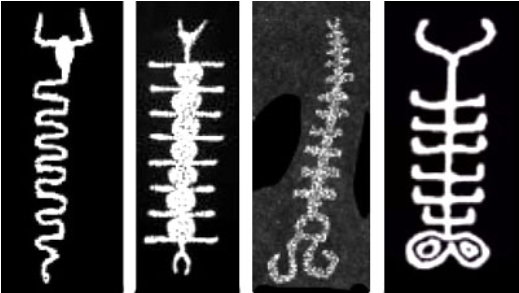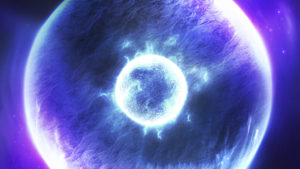Plasma Scientist Anthony Peratt Meets the Electric Universe
By David Talbott
PART 2: The Backbone of the Sky
The events leading to the destruction of plasma scientist Tony Peratt’s career hold a unique message for all of us. Over a lifetime exploring challenges to orthodoxies in the sciences, I have never seen anything like it. And I have seen a lot.
The story must be told because those complicit in the ending of Peratt’s culminating work are still holding in place a profound deception—a cover story to hide misconduct in the sciences.
The critical juncture came in relation to a seminar our group announced for Portland, Oregon, September 22-24, 2000. We had made the decision to invite several scientists on the leading edge of innovation. And it worked, culminating in the announcement of expanded scientific outreach—
SEMINAR: “Our Violent Solar System”
DATE: September 22-24, 2000
Portland OregonThis urgent update concerns our September seminar and some exciting additions to our speaker list: plasma cosmologist Tony Peratt, astronomer Halton Arp, astronomer Tom Van Flandern, and geologist Robert Schoch. These and other added speakers will give this event a much broader impact than we originally envisioned.
But then it happened. First one, then another, then a third speaker notified us that he was unable to attend. Of the speakers listed above, only one was left: Tom Van Flandern. I called Tom whom, by good fortune, I had gotten to know at our earlier conference in 1994. He informed me that the speakers canceling had all been scared away by threats from a fellow I shall name Resident Troll, whose words made clear that he would personally guarantee the destruction of their career if they attended.
Tom and I agreed that, separately, we would call the speakers who had cancelled and explain the situation to them. I still remember these conversations well, and it was clear that each or our originally-named speakers really did prefer to come. The only obstacle was the deep anxiety instilled by Resident Troll’s threats.
As it turned out, our conversations were sufficient to persuade all of the speakers to attend. And in amazing ways the event proved to be a turning point for us.
On the Monday following the seminar, we called a private gathering of speakers. The room was filled with inspiration and a sense of raw potential opening in front of us. In the meeting, the late astronomer Halton Arp, the leading authority on peculiar galaxies, stated his impressions to me in no uncertain terms: “What excites me the most about your presentation is that we are now seeing in remote space the types of formations you’ve described in earth’s past.”
One of the archetypal forms I had discussed involved the global myths and symbols of the “Chain of Arrows,” a theme inseparably connected to another archetype, the “Ladder of Heaven.” As the story was most commonly told, a great warrior launches arrows into the sky, each embedding itself in the one above to form a ladder or stairway to the land of the gods.
It soon became clear to me that the rungs of the ladder could be best understood as a stack of toruses. And I noted that the toruses themselves appear to have formed out of twisting filaments reaching upward along an axis before dividing into a toroidal stack. But I did not have anything approaching an adequate explanation for the “eye mask” configuration taking form at the “base” of the configuration. A few glimpses of the implied evolutionary sequence can be seen in the forms carved on rock below, from the American southwest:

It seems that this revelation stopped Peratt in is tracks. “That’s the evolution of the plasma instability in the laboratory!” he exclaimed. So the moment he got home, he asked me to send him the rock art images. And that began a series of animated exchanges between us, as I transmitted to him dozens of rock art images relating to the evolving formation in the ancient sky.
It was this exchange that led directly to the story reported in the first segment of this series. Initially I sent Tony just the Kayenta pictograph (image on the right above), and at that moment, as he subsequently stated to me, he knew his life had changed. “You can’t deny formations carved on stone,” he said. The precise correspondence with the laboratory discharge evolution was definitive, and it allowed for no other interpretation.
Peratt wrote:
“Many petroglyphs, apparently recorded several millennia ago, have a plasma discharge or instability counterpart, some on a one-to-one or overlay basis. More striking is that the images recorded on rock are the only images found in extreme energy density experiments; no other morphology types or patterns are observed. The inward rise on axis along with the upward folding of the outer edges of the carved lines and transition to edge curling, a phenomenon recorded in intense electrical discharge radiographs, could not have been known to prehistoric man unless he witnessed the same event in the sky.”
The effect on the Electric Universe movement (before the movement had been given that “official” name) was transformative. Very quickly Peratt himself signed a contract for support of his field work, all with a goal to document global rock art and its connection to intensely energetic plasma forms seen in both the laboratory and in space.
Over several years, with the help of several assistants and collaborators, Peratt used GPS to record the fields of view of the ancient artists at the precise locations of thousands of rock art images. By plotting this data on computerized topographical maps, he could calculate where the various forms occurred in the Earth’s ancient plasmasphere (magnetosphere). Peratt’s consequent peer reviewed papers were then published over several years, from 2004 to 2009, some co-authored with our own colleagues, retired electrical engineering professor Donald Scott and linguist Rens van der Sluijs.
As I have had many opportunities to reflect back on these events, I have found myself marveling at the intellectual movement that exploded in the wake of Peratt’s contribution, now reaching hundreds of thousands of people seeking to know more. And I have often paused to wonder about the situation we would have faced if a single Inquisitor (Resident Troll) had succeeded in his campaign to shut down our seminar in September 2000. The hero of this story is beyond question our good friend and critic, the late astronomer Dr. Tom Van Flandern


